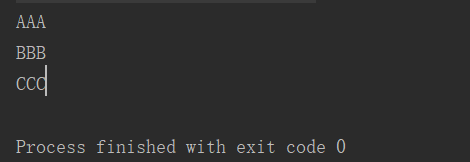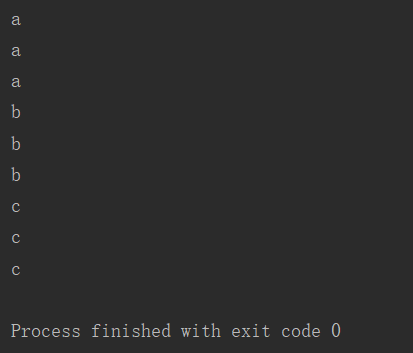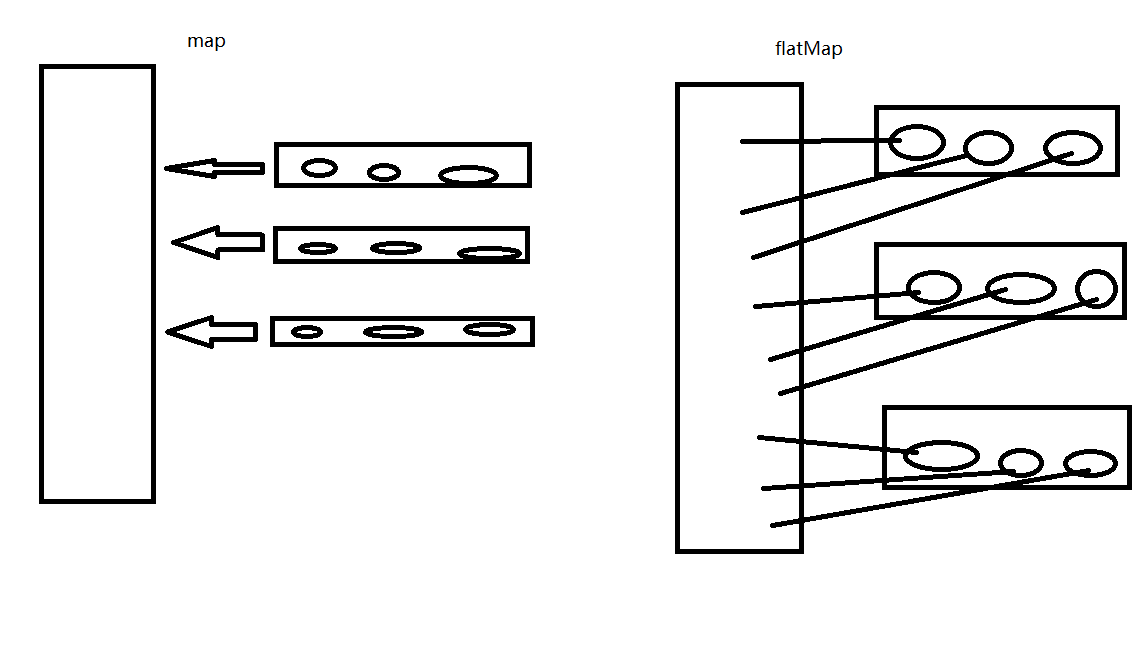Stream API
Steam API (java.util.stream.*)

三个步骤
①:将数据源转换成流
②:一系列中间操作
③:产生一个新流(不改变源数据)
流(Stream)是什么?
是数据渠道,用于操作数据源(集合、数组等)所生成的元素序列。
集合讲的是数据,流讲的是计算!
注意:
①:Stream 自己不会存储元素。
②:Stream 不会改变源对象。会返回一个处理后的新Stream。
③:Stream 操作是延迟执行的。要等到需要结果的时候才执行
一、创建 Stream
1、可以通过Collection 系列集合提供的 stream() (串形流) 或 parallelStream() (并行流)获取流
List<String> list = new ArrayList<>();
Stream<String> stream = list.stream();2、通过Arrays 中的静态方法 stream() 获取数组流
String[] strs = new String[5]
Stream<String> stream1 = Arrays.stream(strs);3、通过 Stream 类中的静态方法 of()
Stream<String> stream3 = Stream.of("aa", "bb", "cc");4、无限流
Stream<Integer> stream4 = Stream.iterate(0, (x) -> x + 2);此时的流是没有任何效果的,只是被创建出来了,要通过中间操作或者终止操作才有效果
二、中间操作
中间操作,如果没有终止操作是不会有任何的执行
1、筛选与切片
filter:接收 Lambda,从流中排除某些元素
limit:截断流,使元素不超过给定数量。
skip(n):跳过元素,返回一个扔掉前 n 个元素的流,若流中不足 n 个,返回空流,与 limit 互补
distinct:筛选,通过流所生成的 hashCode() 和 equals() 去除重复元素
// 假设有一个Person类和一个Person数组
// 此时没有迭代,但是Stream API 会自动迭代,称为内部迭代
// filter 取出所有年龄大于35的
Stream<Person> stream = persons.stream().filter((p) -> {
System.out.println("Stream API 的中间操作");
return p.getAge() > 35;
});
// limit 只会取出2个年龄大于35的,找到需要的数据之后,就不继续迭代,称为“短路”,提高效率
Stream<Person> stream = persons.stream().filter((p) -> p.getAge() > 35).limit(2)终止操作:一次性执行全部内容,叫“惰性求值”或“延时加载“
stream.forEach(System.out::println);外部迭代
Iterator<Person> it = persons.iterator();
while(it.hasNext()){
System.out.println(it.next());
}2、映射
map:接收 Lambda,将元素转换成其他形式或提取信息。接收一个函数作为参数,该函数会被应用每一个元素上,并将其映射成一个新的元素。
flatMap:接收一个函数作为参数,将流中的每个值都换成另一流,然后把所有流连接成一个流
map 案例
@Test
public void test(){
List<String> stringList = Arrays.asList("aaa", "bbb", "ccc");
stringList.stream()
.map(x -> x.toUpperCase())
.forEach(System.out::println);}输出

flatMap
@Test
public void test1(){
List<String> stringList = Arrays.asList("aaa", "bbb", "ccc"); stringList.stream()
.flatMap(StreamAPI::filterChar)
.forEach(System.out::println);
}
// 将字符串变成一个一个的字符
public static Stream<Character> filterChar(String str){
List<Character> charList = new ArrayList<>();
for (char ch : str.toCharArray()) {
charList.add(ch);
}
return charList.stream();
}输出结果

map 和 flatMap 有点像 List 的 add 和 addAll

3、排序
sorted:自然排序
sorted(Comparator com):订制排序
三、终止操作
1、查找与匹配
allMatch:检查是否匹配所以元素
anyMatch:检查是否至少匹配一个元素
noneMatch:检查是否没有匹配所有元素
findFirst:返回第一个元素
findAny:返回当前流的任意元素
count:返回流中元素的总个数
max:返回流中最大值
min:返回流中最小值
@Test
public void test3(){
List<String> list = Arrays.asList("aaa", "aaa", "aaa", "aaa"); List<String> list1 = Arrays.asList("aaa", "bbb", "ccc", "ddd"); boolean b = list.stream().allMatch(x -> "aaa".equals(x)); System.out.println(b);
boolean b1 = list1.stream() .anyMatch(x -> "aaa".equals(x)); System.out.println(b1);
boolean b2 = list1.stream() .noneMatch(x -> "fff".equals(x)); System.out.println(b2);
Optional<String> first = list1.stream().findFirst(); System.out.println(first);
Optional<String> any = list1.stream().findAny(); System.out.println(any);}
// 输出
true
true
true
Optional[aaa]
Optional[aaa]
List<Integer> list2 = Arrays.asList(111, 222, 333, 444);
long count = list2.stream().count();
System.out.println(count);
Optional<Integer> max = list2.stream().max(Integer::compareTo);
System.out.println(max);
Optional<Integer> min = list2.stream().min(Integer::compareTo);
System.out.println(min);
// 输出
4
Optional[444]
Optional[111]2、归约
reduce(T identity, BinaryOperator):将流中元素反复结合起来,得到一个值
// Person类
@Data
public class Person {
private String name;
private Integer age;
private Integer salary;
public Person(String name, int age, int salary) {
this.name = name;
this.age = age;
this.salary = salary;
}}
// reduce
// 把0作为初始值给x, 从流中拉取一个值给y完成相加操作,操作结果再给 x,再从流中拉取一个值完成操作,依次往复。
List<Integer> list = Arrays.asList(1, 2, 3, 4, 5, 6, 7, 8, 9);
Integer sum = list.stream()
.reduce(0, (x, y) -> x + y);
System.out.println(sum);
// 求person的工资总和
Optional<Integer> reduce = people.stream()
.map(Person::getSalary)
.reduce(Integer::sum);
System.out.println(reduce.get());
// 这种 map 与 reduce 连接的模式,可以成为 map-reduce 模式
// 输出
45
27000
3、收集
collect:将流转换成其他形式,接收一个Collector接口实现,用于给Stream中元素做汇总的方法。
// 收集成list
List<String> collect = people.stream()
.map(Person::getName)
.collect(Collectors.toList());
Set<String> set = people.stream()
.map(Person::getName)
.collect(Collectors.toSet());
// 收集成其他集合类型
LinkedList<String> linkedList = people.stream()
.map(Person::getName)
.collect(Collectors.toCollection(LinkedList::new));
// 工资平均值
Double avg = people.stream()
.collect(Collectors.averagingInt(Person::getSalary));
// 求年龄最大的Person
Optional<Person> maxByAge = people.stream()
.collect(Collectors.maxBy((p1, p2) -> p1.getAge().compareTo(p2.getSalary())));
// 分组
Map<Integer, List<Person>> groupByAge = people.stream()
.collect(Collectors.groupingBy(Person::getAge));
// 多级分组,先按年龄再按工资分组
Map<Integer, Map<Integer, List<Person>>> collect1 = people.stream()
.collect(Collectors.groupingBy(Person::getAge,
Collectors.groupingBy(Person::getSalary)));
// 分区, 按年龄18为分区标准
Map<Boolean, List<Person>> collect2 = people.stream()
.collect(Collectors.partitioningBy(p -> p.getAge() > 18));
// 连接
// 结果:***zhangsan,lisi,wangwu,zhaoliu,tianqi***
String collect3 = people.stream()
.map(Person::getName)
.collect(Collectors.joining(",", "***", "***"));
System.out.println(collect3);